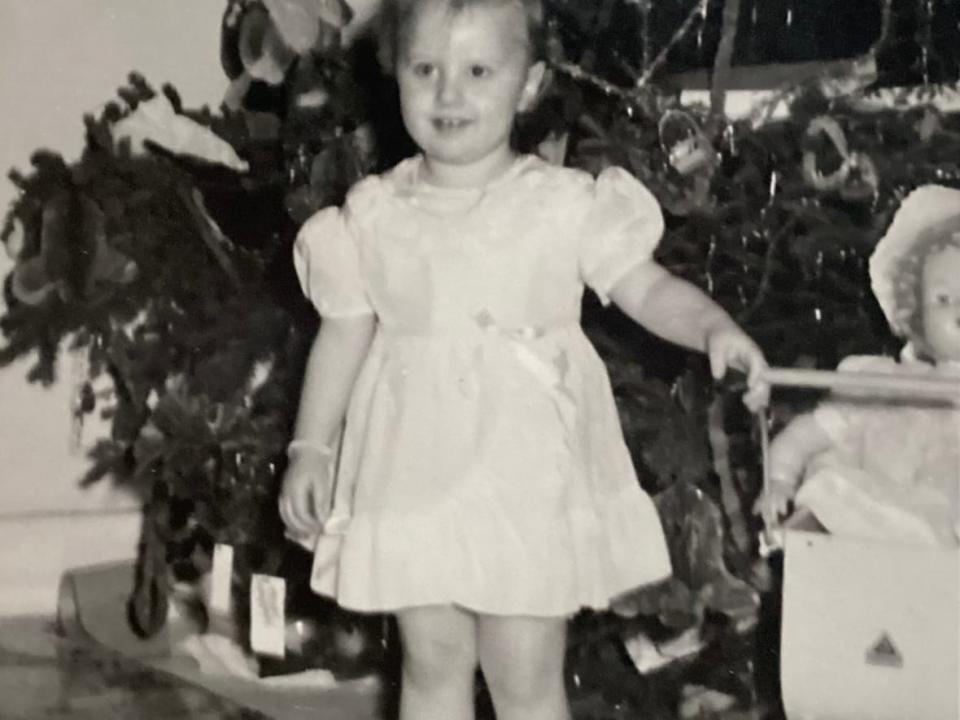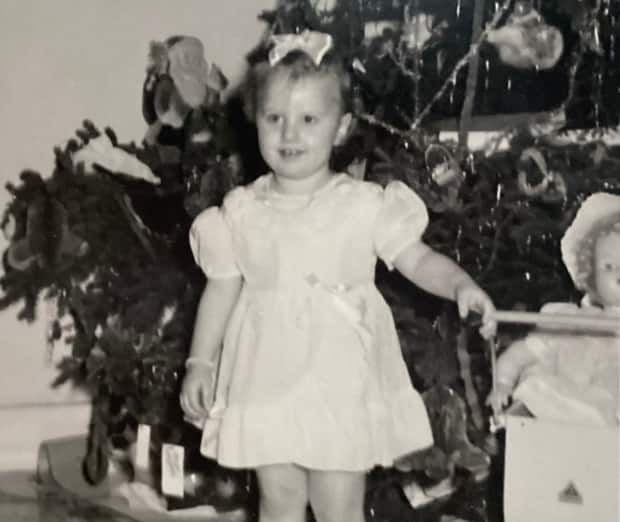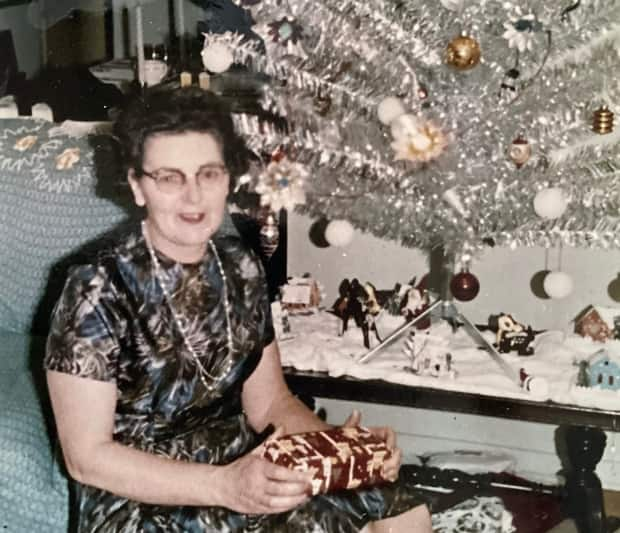"Can we see your tree?": Why kids used to knock on doors to see Christmas trees in St. John's


"Missus, can we see your tree?"
For St. John's residents of a certain generation, that phrase is bound to ring a bell.
Throughout the '50s and '60s in St. John's — and, quite possibly, many years before that — kids would knock on their neighbours' doors, recite the request to see the Christmas tree, and get ushered inside to have a good look.
Then, after gazing at the tree for a few minutes — and singing the praises of the tree in question — the kids would get treats and be sent on their way.
Ruth Green, who grew up on Southside Road in St. John's, remembers the tradition well.
"You'd take off your gaiters, go into the front room, admire the tree and tell them how beautiful the tree was," Green said in an interview with CBC Radio's St. John's Morning Show. "And then you'd be given some dark fruitcake and Purity syrup."
Green remembers making the rounds before supper, just as evening was settling in.
"You would do this when it was dark, and so the tree lights would be on. And you'd go in and sit down in the front room and, you know, just have your treat," she said.
Ruth's husband, Gary Green, didn't visit Christmas trees himself. His family moved to St. John's from the Northern Peninsula in 1950, and his parents weren't used to the tradition.
But he does recall his parents hosting "waves of kids" over the Christmas holidays, at their house on Carson Avenue.
"The knock would come on the door … and the kids would come in as far as the porch. They didn't have to take off their gators in our house," Green said.
"And they'd say all kinds of wonderful things about the tree and perhaps the presents they saw under the tree. And mother would always keep boxes of chocolates and things like that."

The Greens have friends who did this all over St. John's, including in the East End and along Gower Street.
Laura Tuck, whose parents moved to St. John's from western New York in 1967, says kids knocked to see her mother's tree on Mount Scio Road.
"She'd let them in and she gave them candy canes off the tree and some cookies. We always had a huge tree," Tuck wrote in an email.
But despite some widespread popularity in and around the borders of St. John's, there's not much information to be found online.
These days, no one really knows what to call it, either. Some refer to it by the request — "can we see your tree?" — while others say tree-visiting, tree-viewing and even trick-or-tree.
A tradition with many possible origins
"It's a very poorly documented tradition," said retired folklore professor Philip Hiscock.
He suspects that, at the time, folklorists in St. John's were basically unaware of the tree-visiting.
"A lot of folklore exists in very, very local ways and in very, very local forms," he said. "This one is, I think, quite peculiar to mid-20th century St. John's."
Hiscock said the 1861 mummering ban may have played a role in sparking the tradition, since St John's was hit especially hard by those restrictions.
"In many other parts of the province, people simply ignored the mummering ban," Hiscock explained.
Though the tree visitors didn't dress like mummers, they did show up without notice at their neighbours' doors.
They also had similar expectations when it came to collecting favours and treats, and Hiscock suggested the tree visits "may have been a little crack off that, a little fragment of mummering."

Hiscock also sees connections with the "wren boys" tradition practiced in Irish-settled areas of the island, where children would recite a rhyme while carrying an effigy of a bird door-to-door. Like the tree visitors, the wren boys looked forward to gifts in return for their efforts.
And how about trick-or-treating? Hiscock said that's a very similar tradition as well.
"That, too, has its roots in a kind of quasi-religious beggary," he said.
Whatever we call it, it's clear the tradition has many possible origins, and Hiscock said that's typical of how traditions grow and develop.
"The roots of folklore are never single — they're not a taproot that runs down in the soil. They're like great, huge mushroom roots going all over the place," he said.
The end of an era
So when did the tree visits come to an end?
Gary Green believes the practice disappeared sometime in the '60s, and Hiscock agrees.
"By the end of the 20th century, I doubt it was very widespread at all in the city," Hiscock said. "And, you know, perhaps except in very special cases of revival — not done."

Of course, mummering's had a revival in the province over the last few years, so if kids started knocking at Ruth and Gary Green's door now — in an alternate world not dominated by COVID-19 — would they let them in to admire the tree?
"Sure," said Gary.
"If I knew who they were," said Ruth.
"It was … a way to see the kids in the neighbourhoods that came in and to give them a little exchange of a merry Christmas," added Gary. "And that was a little bit of an uplift."

